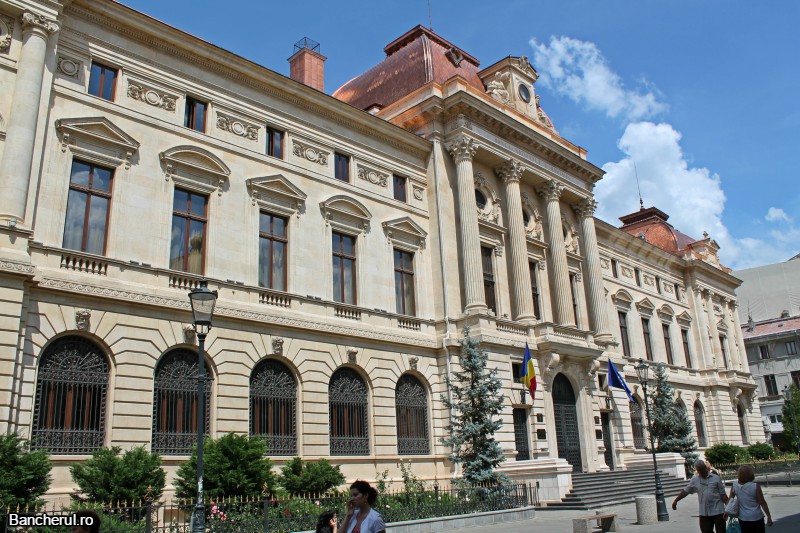
National Bank of Romania monetary policy meeting press release:
In its meeting of 30 June 2016, the Board of the National Bank of Romania (NBR) decided the following:
- to keep unchanged the monetary policy rate at 1.75 percent per annum;
- to pursue adequate liquidity management in the banking system; and
- to maintain the existing levels of minimum reserve requirement ratios on both leu- and foreign currency-denominated liabilities of credit institutions.
The NBR is closely monitoring external and domestic developments and stands ready to use all its available tools during this period of heightened uncertainty in a bid to fulfil the overriding objective regarding medium-term price stability and to preserve financial stability.
The most recent macroeconomic developments show the annual inflation rate remaining in negative territory, along with economic growth picking up, solely on the back of stronger domestic demand.
Following the cut in the standard VAT rate from 24 percent to 20 percent and the drop in global food and energy prices, the annual inflation rate moved in line with expectations, declining to -3.5 percent in May 2016 from -0.93 percent at end-2015.
The average annual CPI inflation rate stood at -2.1 percent in May 2016, while the average annual inflation rate based on the Harmonised Index of Consumer Prices, which is relevant for assessing convergence with the European Union, came in at -1.7 percent.
Annual GDP growth gathered momentum, reaching 4.3 percent in 2016 Q1, compared with 3.8 percent in the previous three-month period. The rapid increase in final consumption of households, amid their higher income and the extended fiscal stimulus action, caused GDP dynamics to hit a post-crisis high, together with a sharp rise in imports. The fast-paced import growth led to the trade balance worsening, which, alongside a relative contraction in inflows from EU funds, had a bearing on the current account. This development was partly countered by the wider surplus on trade in services.
On the supply side, the key determinant of the pick-up in economic growth was the gross value added in the services sector, which came to account for an unprecedented 60 percent of GDP.
The most recent data and business surveys point to an ongoing expansion of consumer demand and elevated unit labour costs in industry.
Real monetary conditions have remained stimulative. Monetisation of the economy gained ground and credit to the private sector saw its upward trend strengthening, driven by the dynamics of leu-denominated loans. In May 2016, loans in domestic currency climbed to 54 percent of the stock of private sector loans, the highest share since 1997. This development confirms the improvement in the monetary policy transmission, helping mitigate the risks to financial stability as well.
The heightened volatility on global financial markets in the context of the UK referendum had a bearing also on the local market, but the exchange rate of the leu recorded lower movements than those of its regional peers. International reserves remain adequate and Romania’s external position is sustainable. Together with a currently stable macroeconomic environment, they ensure a proper resilience of the domestic economy to adverse external shocks.
Short-term forecasts point to the annual inflation rate staying in negative territory, albeit at considerably less negative readings due to the fading out of the direct impact of broadening, in June 2015, the scope of the reduced VAT rate to all food items. The prospects for the inflation rate to gradually return into positive territory are surrounded by both domestic and external risks, amid heightened uncertainty.
Specifically, the external environment is marked by persistently low inflation, as well as by the escalating uncertainty about global economic growth, the UK’s status in relation to the European Union, and about the monetary policy stances of the world’s major central banks, given the higher volatility on international financial markets.
On the domestic front, risks stem from the fiscal and income policy stance, as well as from the adverse effects generated by legislative changes in the financial and banking areas.
Based on currently available data and in the context of heightened uncertainty, the Board of the National Bank of Romania has decided to keep unchanged the monetary policy rate at 1.75 percent per annum and to further pursue adequate liquidity management in the banking system.
Moreover, the NBR Board has decided to maintain the existing levels of minimum reserve requirement ratios on both leu- and foreign currency-denominated liabilities of credit institutions.
The NBR Board decisions aim to ensure and preserve price stability over the medium term in a manner conducive to achieving sustainable economic growth.
The prudent monetary policy stance and the adequate dosage of the monetary policy instruments, along with the precautionary measures in the area of prudential supervision of the banking sector, are likely to strengthen the Romanian economy’s capacity to withstand shocks. However, the consolidation of the economic picture calls for a balanced macroeconomic policy mix and for progress in structural reforms.
The NBR is closely monitoring external and domestic developments and stands ready to use all its available tools during this period of heightened uncertainty. In its capacity as member of the European System of Central Banks, the NBR is in close contact with other central banks.
The NBR reiterates that it will permanently act towards fulfilling the overriding objective of ensuring medium-term price stability and safeguarding financial stability.
In line with the announced calendar, the next NBR Board meeting dedicated to monetary policy issues is scheduled for 4 August 2016, when a new quarterly Inflation Report is to be examined.

